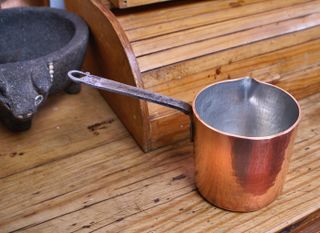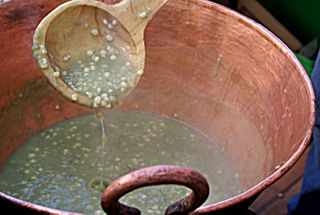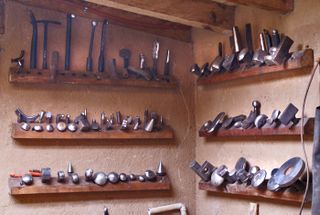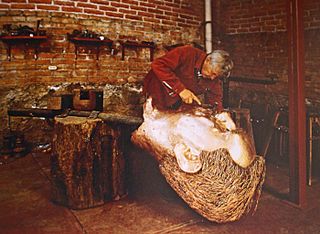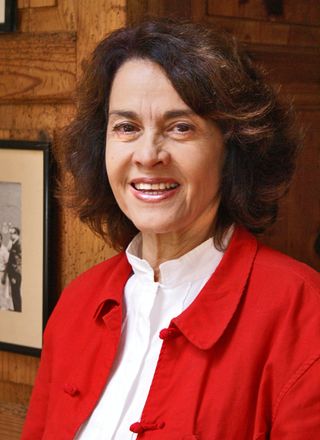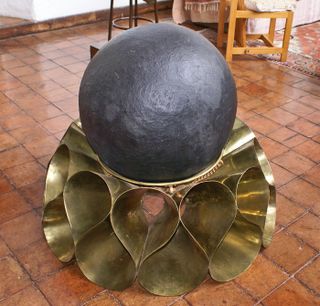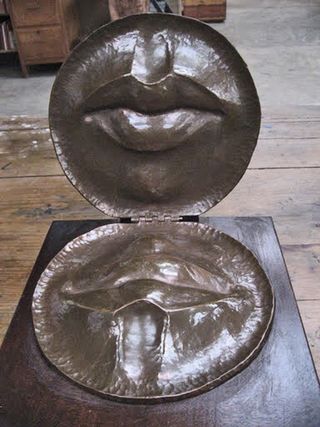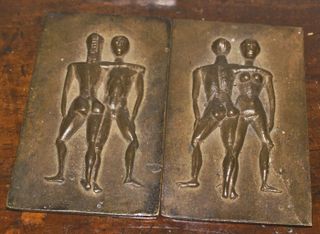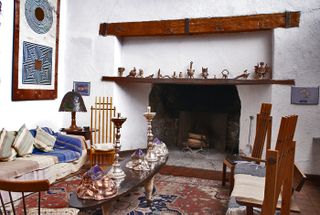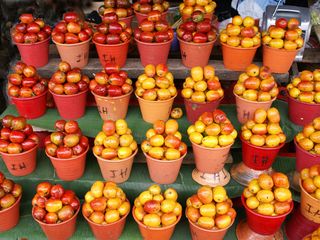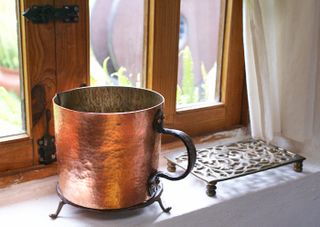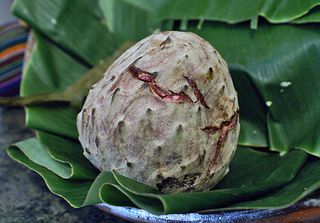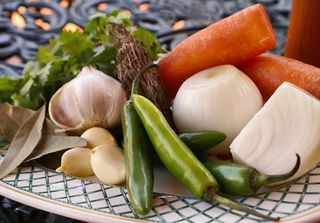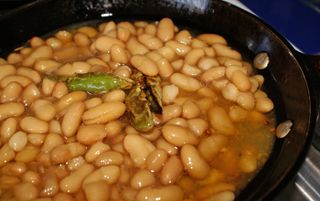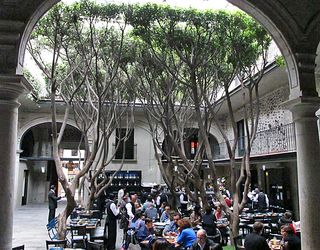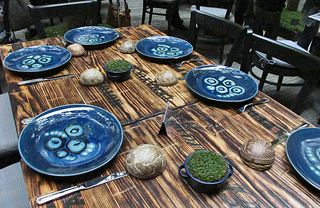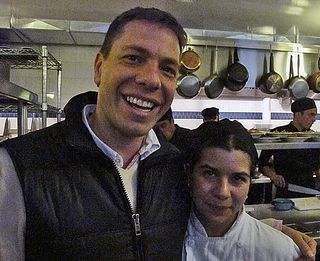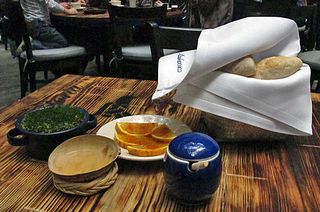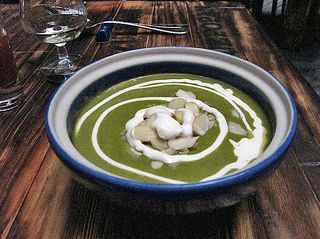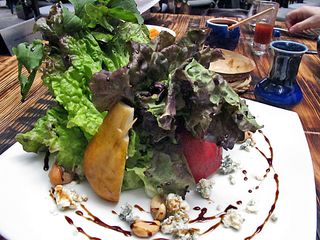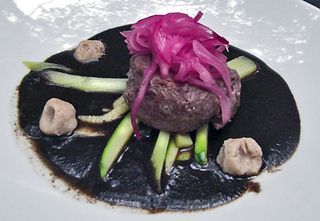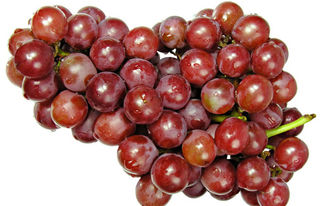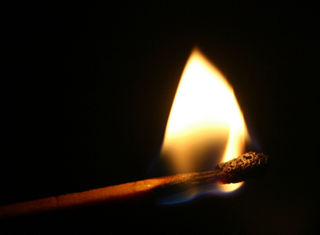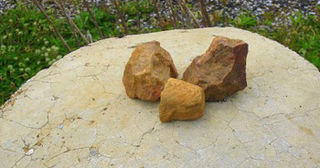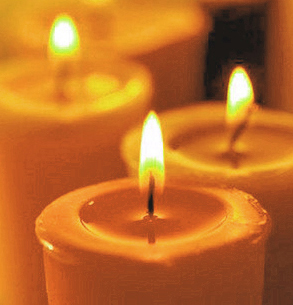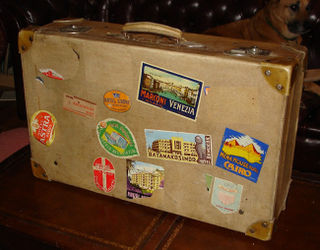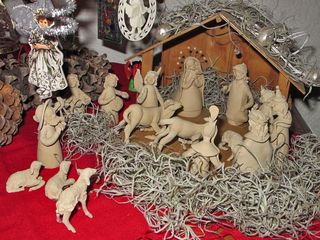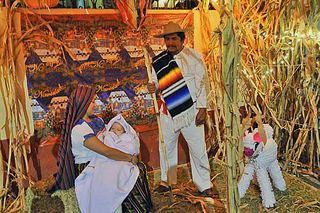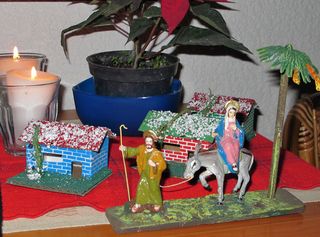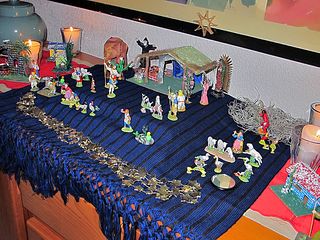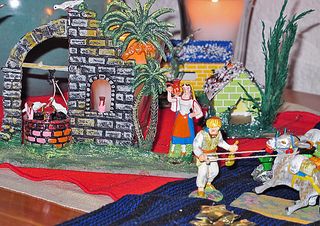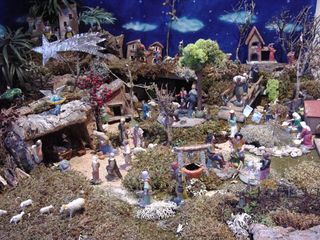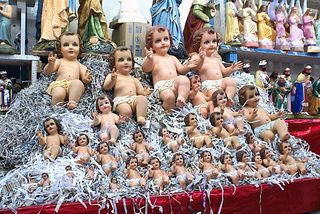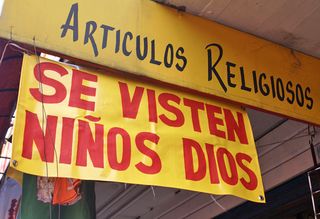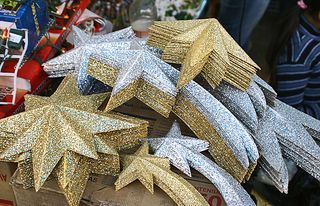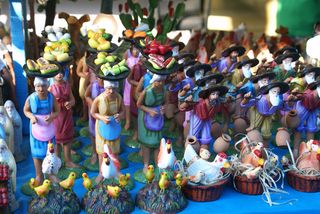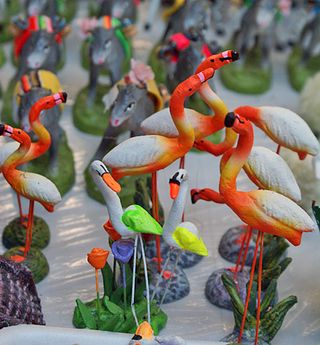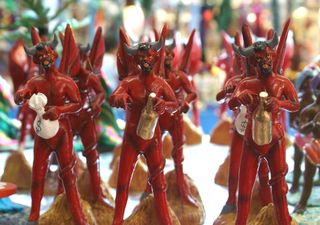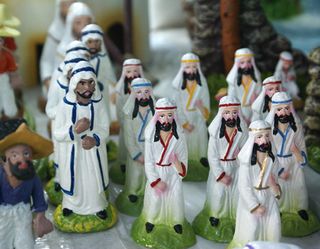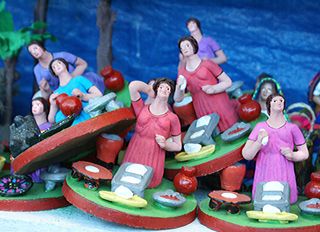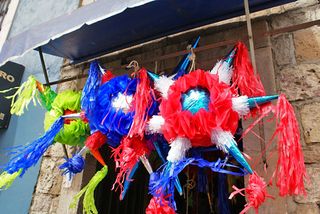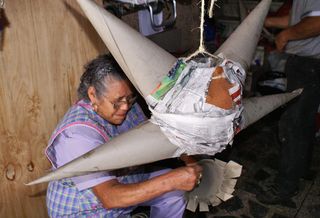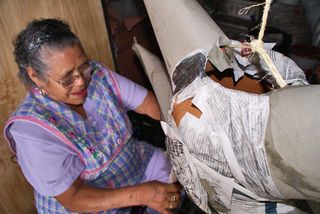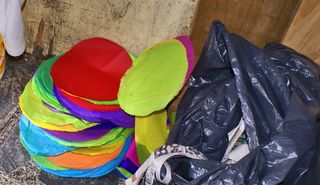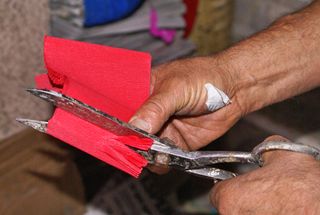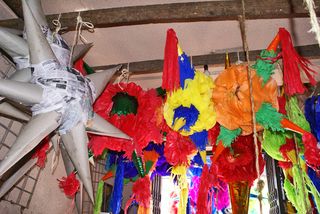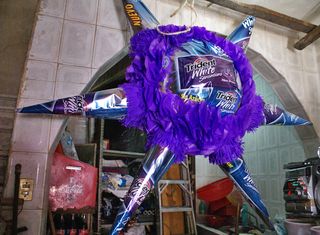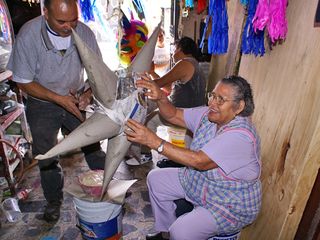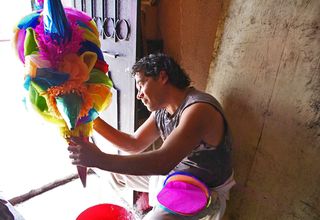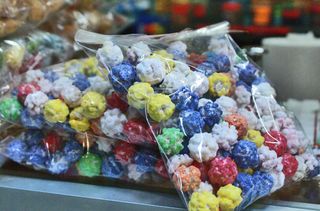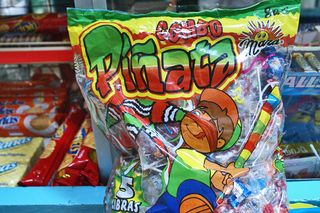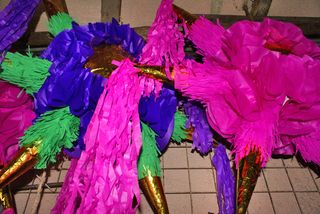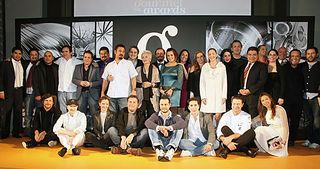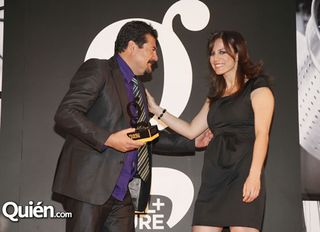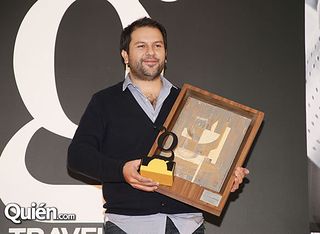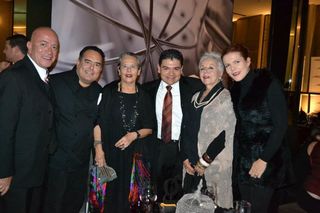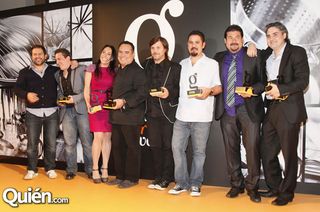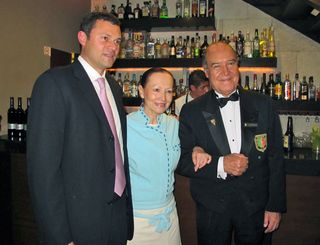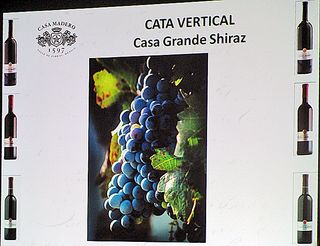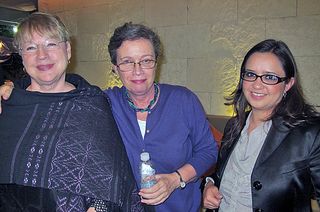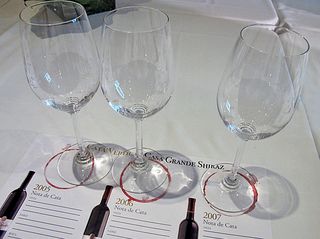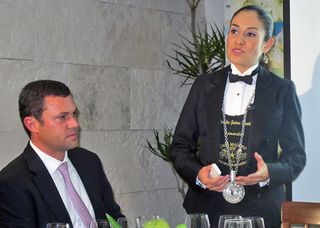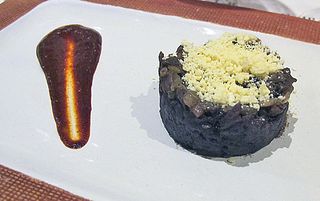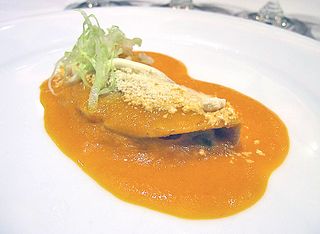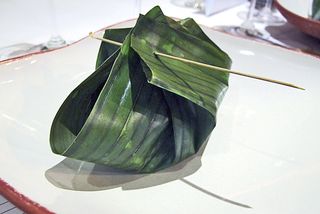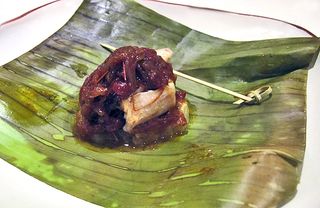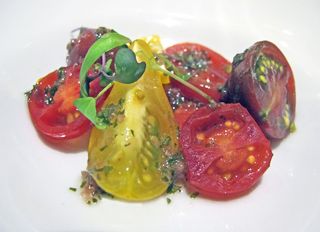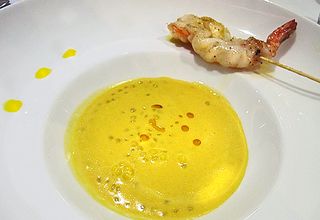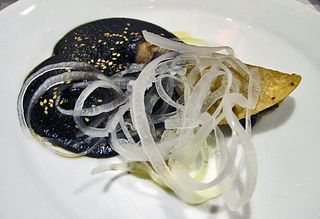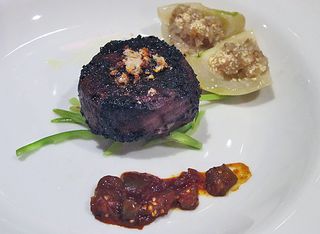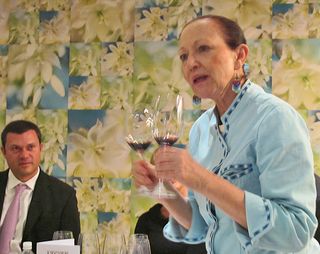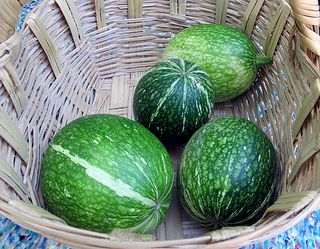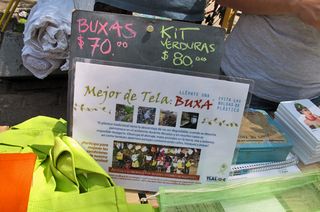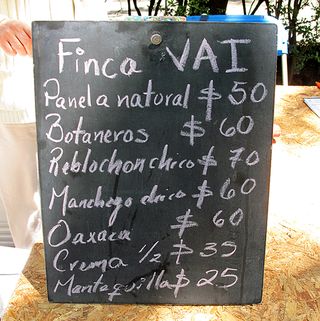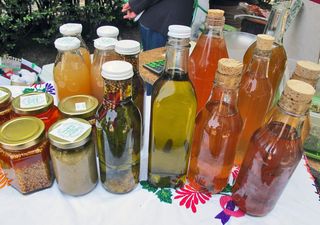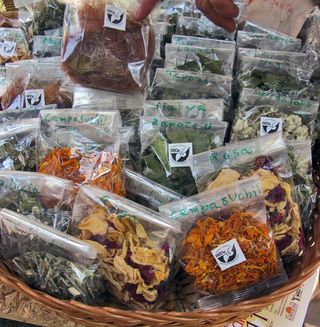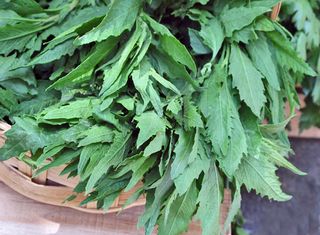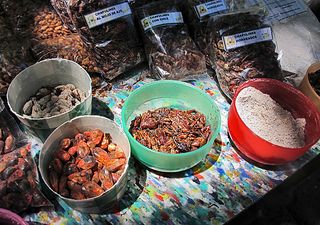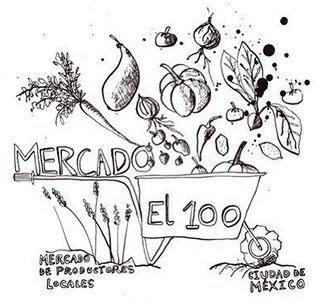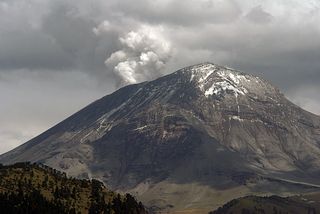
The active volcano Popocatépetl is the second-highest mountain in Mexico at 5,452 meters (17,887 feet) above sea level. Some sources say that Popocatépetl is slightly higher than those quoted figures. Only the Pico de Orizaba (5,610 meters or 18,406 feet) is higher. All photos by Mexico Cooks! unless otherwise noted.
During the last few weeks, Mexico City's newspapers have been full of information about Popocatépetl, the Náhuatl word for 'smoking mountain'. This volcano, which sits in the very back yard of the city, has once again been growling and grumbling and belching gases, steam, smoke, and red-hot ash. Its last major 'exhalation' was in December of 2000 and everyone in this vicinity hopes the mountain won't explode again.
In mid-April, curiousity and excitement about Popocatépetl's current activities led us to make a Sunday afternoon trip to Amecameca in the State of Mexico, the town closest to the volcano from our Mexico City neighborhood. The town is southeast of Mexico City and we were there in a bit over an hour. Had we not stopped along the way to take photographs, we could have arrived sooner.
[youtube=http://www.youtube.com/watch?v=eZAvtPJKg8U&w=350&h=267]
Popocatépetl erupts, December 2000. Popocatépetl and Iztaccíhautl straddle the boundaries of three states: Puebla, Morelos, and the State of Mexico. Video courtesy NBC news.
The alert system for possible eruptions ranges from green (no danger) to red (extreme eruption). Currently, Popocatépetl has been at Alert Phase 3 Yellow (magma flow and growing explosions) for about three weeks. Phase 3 Yellow is the alert just before red. In spite of the high alert level, no evacuations from towns around the volcano have been ordered. Click the link for updates to the 'semáforo de alertas' (alert system stoplight): ALERTAS

Iztaccíhautl, the sleeping woman, lies northeast of Popocatépetl and east of the town of Amecameca in the State of Mexico. Mexico Cooks! took this photo from the atrium of the Templo de Nuestra Señora de la Asunción (Church of Our Lady of the Assumption) in Amecameca; you can see one of the church arches in the foreground. The photo shows Iztaccíhuatl's head (far left) and chest.
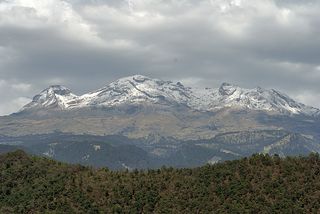
Full view of volcano Iztaccíhuatl. Her head is at the far left in the photo. The clouds are in fact due to the accumulation of steam and ash emitted by Popocatépetl, just out of camera range to the right. The northwestern sky (behind me as I took the picture) was clear blue and brilliantly sunny.
Of course there is a romantic legend about Popocatépetl and Iztaccíhautl. At the beginning of history, when the Aztecs arrived in the Valley of Anáhuac and before the mountains had reached their permanent form, a beautiful princess named Mixtli was born in the city of Tenochtitlán–today's Mexico City. She was the daughter of Tizoc, the Tlatoani Emperor of the Mexicas (to be known later as the Aztecs). Mixtli was sought after by numerous noblemen, among them Axooxco, a cruel and bloodthirsty man, who demanded the hand of Mixtli in marriage. However, Mixtli's heart belonged instead to a humble peasant named Popoca. Popoca went into battle, to conquer the title of Caballero Aguila (Eagle Knight). If he claimed this title of nobility, Popoca would then be able to fight Axooxco for the hand of Mixtli.
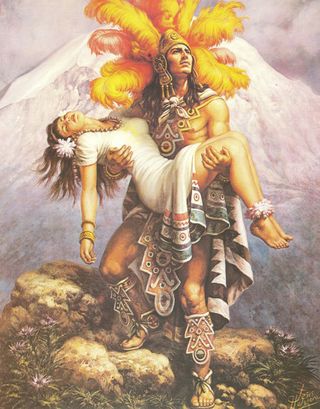
Popoca carries his beloved Mixtli to the snowy mountains.
Mixtli knew the danger Popoca faced in this trial. Finally a messenger brought the news that he had been killed in battle. But the messenger was wrong: Popoca was returning victorious. Not realizing this, Mixtli killed herself, rather than live without Popoca.
When Popoca returned to find Mixtli dead, he picked her up and carried her body into the mountains. Hoping that the cold snow would wake her from sleep to reunite them, Popoca crouched at her feet until he froze there while he prayed for her to awaken.
They have remained there ever since. The body of Mixtli became the volcano Iztaccíhuatl (the Sleeping Woman), the ever-watchful Popoca became the volcano Popocatépetl (the Smoking Mountain). The evil Axooxco became the Cerro Ajusco (the highest point of the Distrito Federal). These volcanoes tower above Mexico City and the romantic legend of this couple has been passed on since the pre-Columbian era as a symbol of enduring and faithful love.
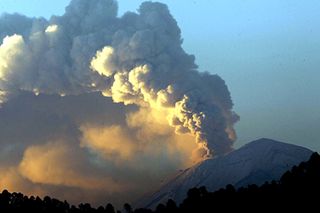
Popocatépetl exhales a huge cloud of steam, gases, and ash on April 18, 2012. Photo courtesy Notimex.
The volcano is generally known by a local nickname: don Goyo. Don is an honorific used to address or refer to any respected well-known man; Goyo is a nickname for Gregorio, in this instance specifically referring to San Gregorio (St. Gregory). Legend says that the volcano once erupted on San Gregorio's March 12 feast day and subsequently received the nickname, but the volcano's feast day (yes, he has one!) is celebrated annually on May 2. On that date, some local residencts carry gifts to the volcano: blankets and una copita (a shot of liquor) to keep him warm, and they pay him their continuing respects. As the white-haired toll booth attendant said when we told him we were on our way to pay a visit to don Goyo, "Be careful up there! He's making all this racket while he's sober–imagine if he had already had his tequila!"
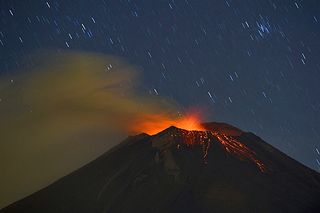
The volcano on the night of April 24, 2012. Streams of molten lava flow down the sides of the crater while fire, steam, smoke, and sparks rise high into the evening sky. The volcano is so loud that some residents find it hard to get a good night's sleep. Photo courtesy MSNBC.
During volcanic activity of this kind, the world keeps turning. Residents in the several towns nearest the volcano go about their normal daily lives while keeping one eye on the top of the mountain and one ear out for the latest alerts. In Amecameca, a delightful old gentleman stopped to chat with us on the street while we were letting a local woman take a close look at the volcano through the camera's telephoto lens. "You know," he ruminated, "we still have to shop, cook, eat, and sleep even though we also have to be prepared for…" he laughed and threw his arms high into the air. "In case it blows!"
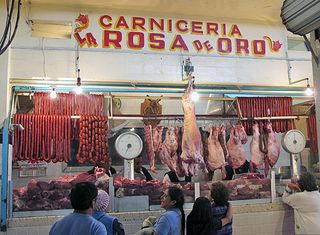
Life goes on: inside the municipal market in Amecameca, people shop for food, gossip with their neighbors, and laugh at the latest jokes. Click on any photo to enlarge it for a better view.
Our new guide continued, "You should go outside town for a better view. It's easy to get there…" He proceeded to give excellent directions for heading to the east into the foothills at the base of the volcano. We shook his hand and followed his directions as far as we could, but the rutted, stone-filled path we were driving outside Amecameca was too difficult for our vehicle. We turned onto another, even smaller road that took us to the crest of a hill. From there, we had an unobstructed view of the two lovers, Iztaccíhautl and Popocatépetl. While the wind blew from behind us, we watched as don Goyo sighed several times, sending heavy plumes of steam and ash into the heavens and away from Amecameca.
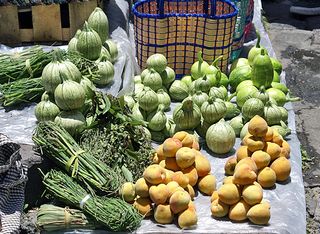
As the volcano steams and roars, commerce continues as it has for thousands of years. Amecameca has a huge Sunday market in the church atrium outside Templo de Nuestra Señora de la Asunciòn. The peaches, bright-green oval chilacayotes, and round calabacitas (zucchini-type squash) are offered for sale piled up in pyramids, the traditional vendors' display method.
Will the volcano blast off into a major eruption? Will it calm down and wait till another time? No one really knows for sure, not even the scientists who monitor its activity. On April 25, the winds shifted and small amounts of ash began to rain down on Amecameca and some of the other nearby towns. We're watching, along with the rest of the populace. And meantime, our lives go on as usual.
Looking for a tailored-to-your-interests specialized tour in Mexico? Click here: Tours.

